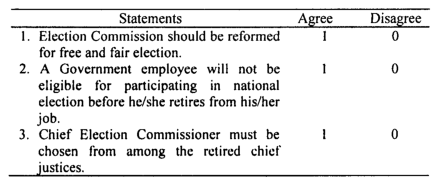Area sampling is a multi-stage sampling scheme, in which maps, rather than lists or registers serve as the sampling frame. This method meets both the problem of high sampling cost and the unavailability of a practical sampling frame for individual elements. Area sampling methods are suitable for national populations, administrative areas, and even smaller areas, where there are well-defined natural boundaries.
In this method, area to be covered by a survey is divided into a number of smaller areas, called sub-areas, of which a sample is selected at random within these areas, and then either a complete enumeration is carried out, or a further sub-sample is taken. This makes an area sampling equivalent to a multi-stage sampling.
The attempt is made at any stage to sub-divide areas in such a way that these sub-divisions actually coincide, preferably with administrative or some other type of known sub-areas of the population.
The sub-areas need not be of equal size, and the sample of such sub-areas is selected with equal or unequal probability. Furthermore, any sampling design may be employed at any stage of sampling, from the initial stage to the ultimate sampling stage.
Area sampling is particularly useful for selecting dwellings. The dwellings serve as sampling units for persons, families, or for other populations that can be associated with each unit, such as dogs, TVs or home gardens, stores, groceries, crops, and other flora.
In any case, with area sampling, geographical stratification is widely practiced, because the map from which the sample is selected provides the necessary stratification information.
Suppose it is desired to conduct a study on the elderly people in a city and that no list of such people is available.
It would, however, be simple to get a detailed map that displays the city blocks bounded by streets.
The city area is then divided into these blocks, and the blocks are numbered, and a random sample of them is selected, which then becomes equivalent to taking a sample of the elderly people of the city.
The boundaries of the blocks must be well-defined, easily identifiable by the field workers, and every dwelling must be located in one and only one block.
The degree of success with area sampling depends, among other things, on the availability of maps, the clarity of the boundaries of the segments, how accurately reporting units are associated with sample segments and completeness of coverage by enumerators.

